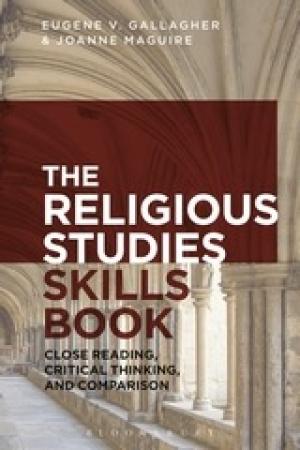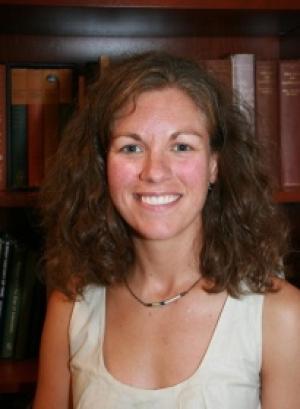Resources by Molly Bassett

Gallagher and Maguire wrote The Religious Studies Skills Book for undergraduate students taking religious studies courses. Recipients of the American Academy of Religion’s Award for Excellence in Teaching and longtime Wabash Center affiliates, Maguire and Gallagher draw on the breadth of their experiences as scholar-teachers to craft an accessible book that covers the basics – and more. They dispel myths, like the assumption that teaching about religions in public universities is unconstitutional, and they clarify common confusion, including the distinction between studying theology and religious studies. They also offer insights into what makes the study of religion so compelling and worthwhile: Students of religion are in a field unlike any other. The field has interdisciplinary breadth and global and historical depth that can’t be found elsewhere on campus. Many students come to the academic study of religion expecting personal spiritual development. Although that might be an accidental outcome of exposure to ideas in any course, teachers tend to be strongly interested in developing students’ skills and knowledge, goals achieved in part by reading, observation, and discussion that brackets personal judgement and biases . . . If a single introductory course in religious studies teaches nothing else, it will at least show you that there are many other ways to understand the world. (69-70) I quote this passage at length because it exemplifies one of the two most important features of this book: the authors write to and for students. They do this from the first to the last page. I never felt like they overlooked the student to speak to a colleague. Midway through, I flipped back to the title page and wrote, “How many of us write for this audience? They’re taking students seriously!” It’s refreshing, and it is one aspect of the book that would make me want to assign it. The book’s other great strength is how the authors model what they expect students to learn. Most chapters include explicit examples. The chapter on comparison offers lengthy examinations of how comparison works using excerpts from sacred texts (Matthew and Science and Health with Key to the Scriptures) and scholarly ones (definitions of religion). In some places, the authors anticipate students’ observations, and in others, they expand their scope. For example, they note fairly obvious similarities between the gospel and Science and Health, and then they expand the comparison through a series of questions about authorial intent. In addition to the explicit examples, Gallagher and Maguire build an argument through the arrangement of the book’s chapters and draw on evidence from scholarship on teaching and learning. The companion website provides more general information and additional exercises, too. My main concern is how the book can reach its intended audience. Ideally, students in introductory courses would read and absorb the Skills Book. Realistically, the motivated majors in a third-year seminar will be carrying copies with dog-eared pages, and, years from now, graduate students learning how to teach will be lucky to find a copy with some dedicated major’s marginalia.

Molly Bassett Associate Professor of Religious Studies Georgia State University A week into the spring semester, the fall term seems like it was forever ago! In my last post, I talked about the informal evaluations my students took, and since writing that post, I have thought about some of the.

Molly Bassett Associate Professor of Religious Studies Georgia State University In my last post, I talked about the final class of my new course “Between Animals and Gods” and promised to say more about the informal student evaluations I give at the end of courses. Like students everywhere, mine take

Molly Bassett Associate Professor of Religious Studies Georgia State University At the end of the term, I like to do three things: wrap up the class, ask students to take an informal course evaluation, and eat cookies. (These are the best ginger spice cookies on the planet. You’re welcome.) In

Molly BassettAssociate Professor of Religious Studies Georgia State University The day before the American Academy of Religion’s annual meeting, I went to THATCamp. THAT stands for “The Humanities and Technology Camp,” and it’s an unconference, which is nothing like an unhappy birthday except that there was tea. Participants create...

Molly Bassett Associate Professor of Religious Studies Georgia State University In my first post, I described a new course-- “Religious Dimensions in Human Experience: Between Animals and Gods” -- and all of the teaching activities I have going on in it: there was planning and now teaching, writing this blog,

Molly Bassett Associate Professor of Religious Studies Georgia State University It’s week nine here and this is my seventh post for the Center’s blog on teaching. We’ve reached the point where I’d like to take you out for coffee and find out how it’s going. I’d love to hear about...

Molly Bassett Associate Professor of Religious Studies Georgia State University On Monday, I told the students that for the first time since I started teaching I was blown away by the entire class’s projects. Their podcasts are fantastic, and you can listen to them here. I’m tempted to keep gushing...

Molly Bassett Associate Professor of Religious Studies Georgia State University “If I wanted to write, I would have taken an English class.” – Anonymous in my intro course Looking back I’ll admit that it was more last straw than “Aha!” In fact, I’m sure there were times when analogous thoughts...

Molly Bassett Associate Professor of Religious Studies Georgia State University In her introduction to Animals in the Four Worlds: Sculptures from India (1989), Wendy Doniger observes that animals and gods inhabit the borderlands of human communities, and as I mention in a piece for Religious Studies News, this notion frames...

Dr. Molly Bassett Associate Professor of Religious StudiesGeorgia State University “Timeliness is next to cleanliness and godliness; we don’t want to waste a minute. Plus, I’ve been looking forward to this moment since at least January, and it was hard to sleep a week ago.” That’s how we began..

Dr. Molly Bassett Associate Professor of Religious Studies Georgia State University By the time you read this, I will have met the students in “Religious Dimensions in Human Experience: Between Animals and Gods.” In this completely redesigned dual-level (grad/undergrad) course, we will explore how people can know a single animal—the...

Dr. Molly Bassett Associate Professor of Religious Studies Georgia State University I wish I could tell you exactly what I’ll be doing on the first day of my new course. But I can’t. What I can say is that the syllabus is mostly finished, and I’ve scheduled meetings with the.